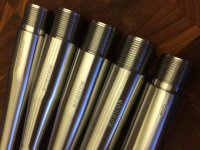Mike,
Curious, is it feasible to change the blade of a wood miter saw with cold saw blade?
nez
I would not do that, as a wood miter saw runs at about 3000RPM and these cold cut saws are only running at 1300rpm. it would probably destroy the carbide blade running it too fast


